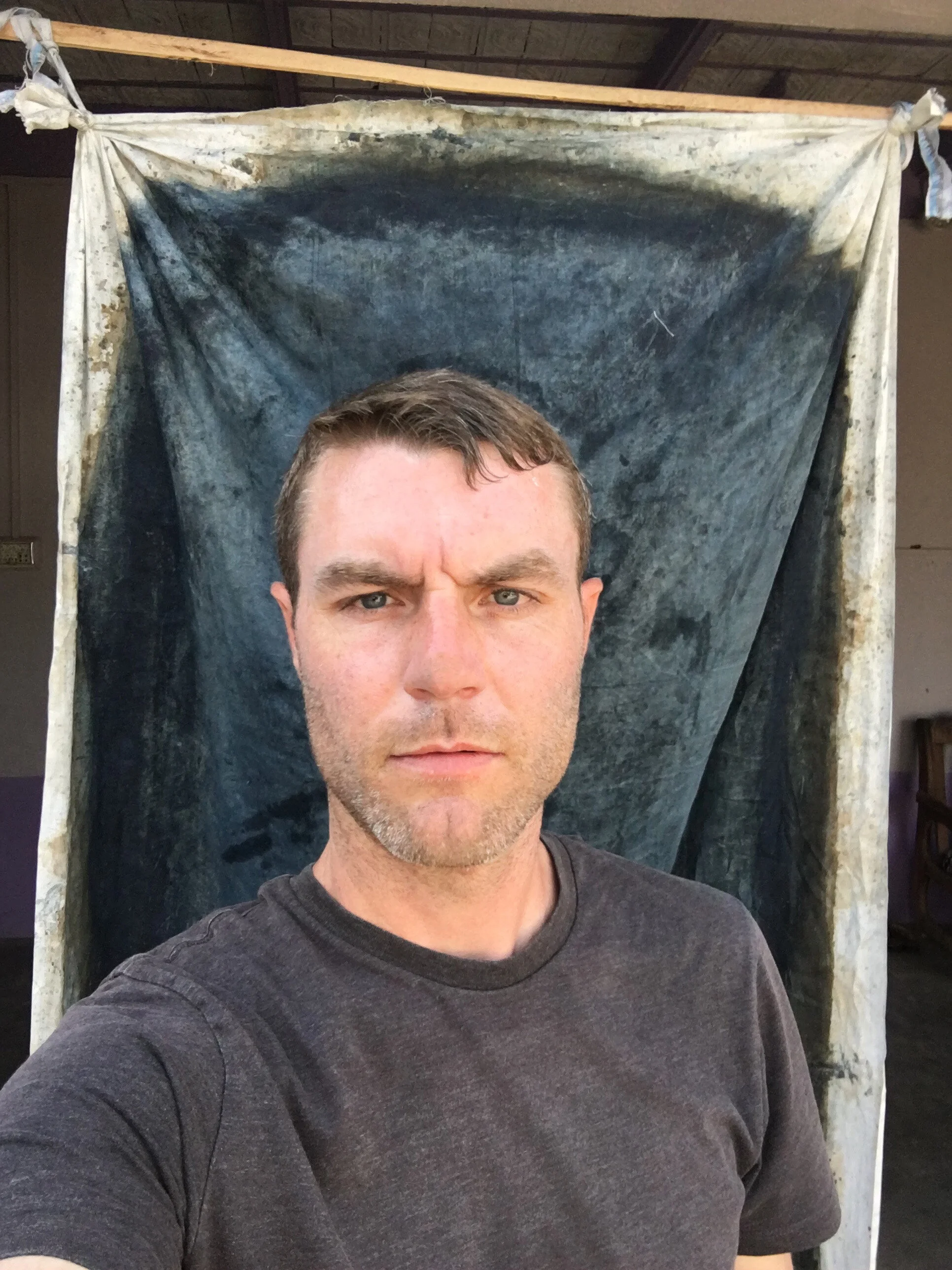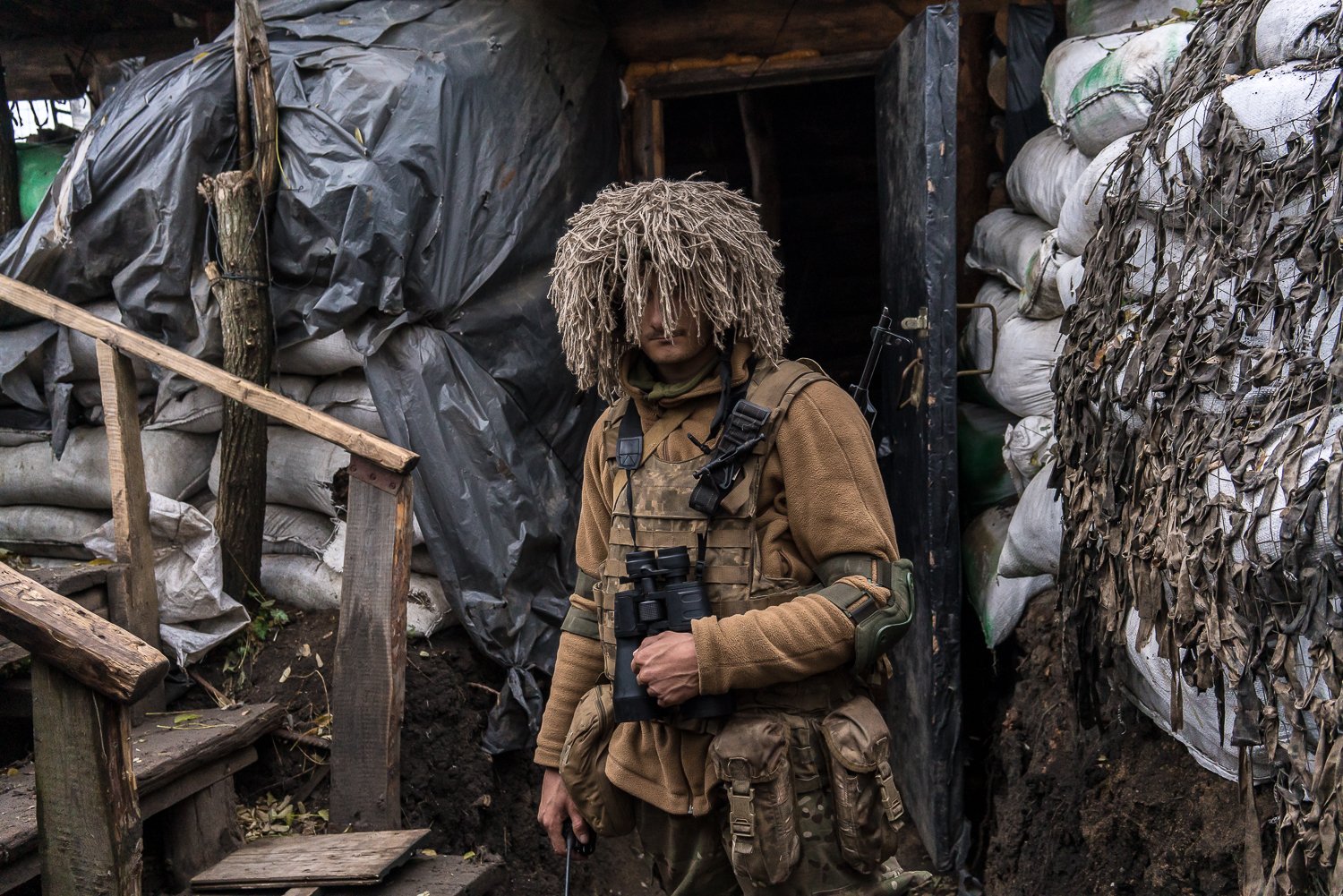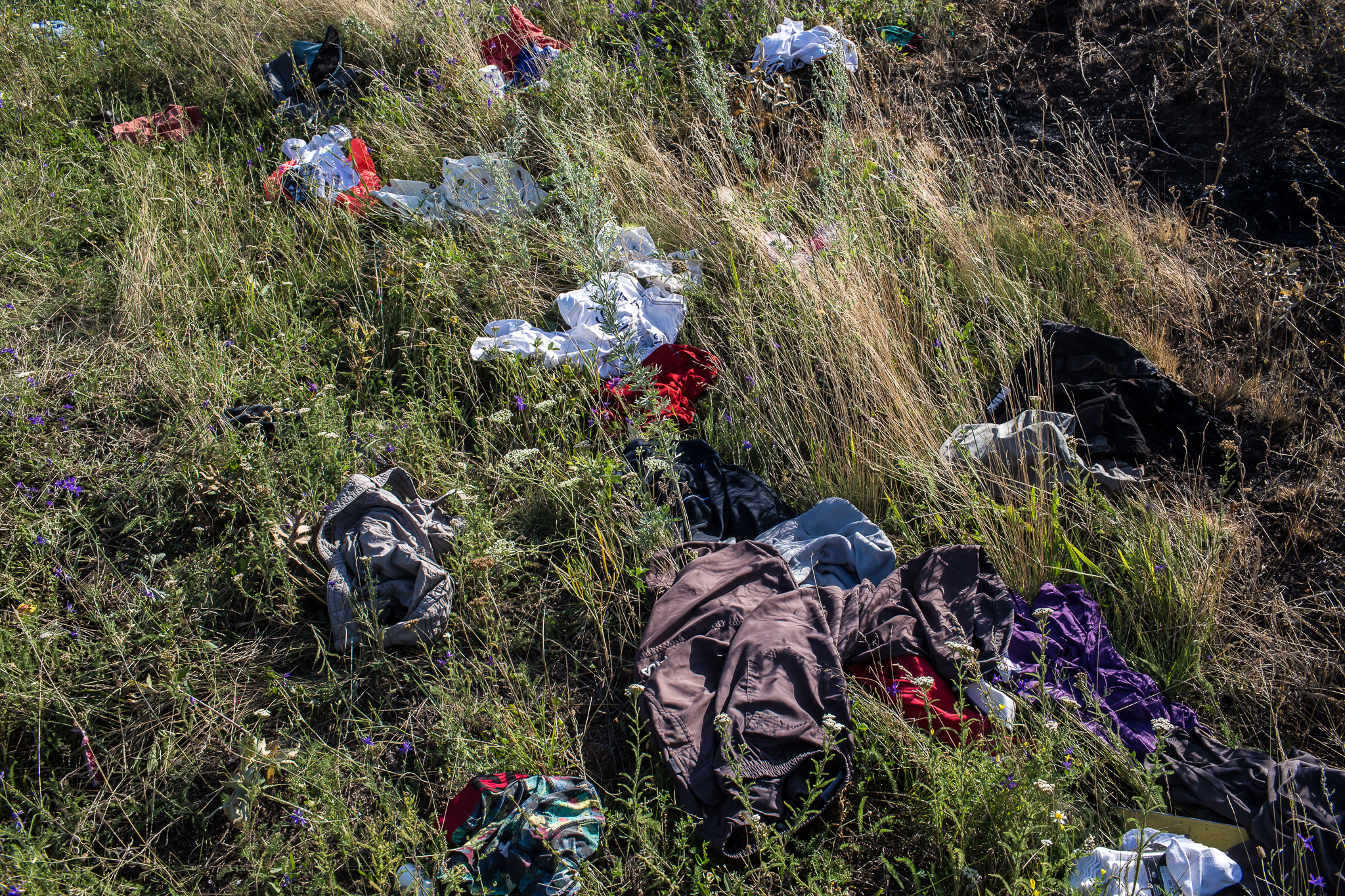
Brendan Hoffman • Photographer Profile
Brendan Hoffman is a documentary photographer based in Kyiv, Ukraine, where his work reflects his interest in themes of nationalism, identity, history, and politics. His recent focus has been on Ukraine and the war in the country’s east, which he has covered for The New York Times, Newsweek, Getty Images, and others. Before that he documented the 2013-14 Maidan protests in Kiev. His book-length project “The Beating of the Heart” is an exploration of contemporary middle class America in the context of free trade, the decline of blue-collar jobs, and economic and political polarization through the lens of a small town in Iowa. From 2007 to 2013, he was based in Washington, DC, and frequently worked on Capitol Hill and at the White House. Brendan’s work has been recognized by Sony, the Alexia Foundation, NPPA Best of Photojournalism, Pictures of the Year International, American Photography 29, the White House News Photographers Association, and other organizations. He has worked in a variety of countries for both editorial and NGO clients, and is a co-founder of Prime.
Brendan Hoffman
KRAKÓw, POLAND • +48 723 625 776 • Kyiv, Ukraine • +380 (50) 700-6256 • studio@brendanhoffman.com
After months of buildup and half-hearted attempts at diplomacy, Russia launched a full, unprovoked invasion of it’s neighbor Ukraine on February 24, 2022. On the false pretexts of safeguarding its own security from NATO expansion and countering Ukrainian radicals, Russia initiated the largest ground war in Europe in decades.
Since protests in Kyiv drove President Viktor Yanukovych from power in February 2014, Eastern Ukraine has been convulsed by a rebel insurgency, inflamed by Russia, that has evolved into a full-fledged war centered in the provinces of Donetsk and Luhansk – an industrial region known as Donbass.
The Eastern European country of Belarus is known primarily for its autocratic leader, Aleksandr Lukashenko, who since 1994 has presided over the former Soviet state as if the USSR had never collapsed. Its economy is largely state-run and political freedoms essentially nonexistent, although a thriving IT industry and relatively low levels of corruption have brought a modicum of comfort to the growing middle class in the capital city of Minsk. It remains a geopolitical fulcrum, shrewdly playing close ties with Russia against Western desires for openness.
The Indus River and its tributaries provide crucial fresh water to both India and Pakistan, yet the future of this shared resource is increasingly precarious as a result of climate change, population growth, and bitter political divisions.
Nagorno-Karabakh is a small mountainous territory in the South Caucasus caught in limbo. Officially part of Azerbaijan, it has functioned as a region of Armenia since the two former Soviet republics fought a bloody war over the land as the Soviet Union fell apart. A 1994 ceasefire brought an end only to official hostilities. In early April 2016 fighting once again erupted for four intense days, killing dozens on each side.
On October 11, 2018, the Ecumenical Patriarch announced its support for Ukraine’s effort to create an independent Ukrainian Orthodox Church, moving out from under Moscow’s patronage for the first time since 1686. It’s a move with long historical roots that was finally realized due to current political tensions, and it has incensed the Russian Orthodox Church leadership, who may break from the church leadership in Istanbul in Christianity’s biggest rupture in a thousand years.
The Beating of the Heart is a dispatch from a place where I both do and do not belong. In 2011 I began photographing in the small town of Webster City, Iowa. Over the next several years I visited more than a dozen times, photographing life in Webster City as well as my own experiences and reactions to it, trying to better understand the people I now consider friends. These photographs are the accumulated record of my journeys, revealing the degree of my bond.
As winter settled over Ukraine in late 2013, Kyiv exploded into crisis. President Viktor Yanukovych announced that he would abandon a promised trade and partnership agreement with the European Union in favor of support from Russia. Thousands of people took to the streets in protest over a culture of official corruption which they feared would only deepen amid closer ties to Russia.
Five years after the devastating 2010 earthquake that killed an estimated 250,000 people, Haiti continues to struggle. Despite the tremendous resources and ideas brought to bear, intended once and for all to set right Haiti’s development and governance challenges, many of the issues that have plagued the country for decades, including corruption, violence, dependence on foreign assistance, and poor infrastructure, remain deeply entrenched. Hopes raised high have fallen, replaced in the minds of many Haitians by bitter resentment that they have once again been exploited and forgotten.
On July 17, 2014 Malaysia Airlines flight MH17 was shot down by a surface-to-air missile as it passed over eastern Ukraine en route from Amsterdam to Kuala Lumpur, killing all 298 people on board. Immediate suspicion, backed up by on-the-ground evidence and analysis from Western intelligence agencies and international investigators, implicated the pro-Russian rebels currently fighting a war in the region, who seemingly received the weapon directly from Russia.

About
Brendan Hoffman (b. 1980, Albany, NY, USA) is a documentary photographer based in Kyiv, Ukraine, where his work reflects his interest in themes of identity, history, politics, and the environment. His recent focus has been on Ukraine, beginning with the 2013-14 Maidan protests in Kyiv, from which his pictures were published and exhibited widely, and continuing with extensive coverage of the war in eastern Ukraine. His work has been supported by regular assignments for The New York Times as well as a 2018-19 Fulbright Scholar fellowship and grants from the Philip Jones Griffiths Foundation, TheDocumentaryProjectFund grant, and the National Press Photographers Association.
In 2017 he was named a Reporting Fellow by the South Asian Journalists Association to photograph a project about the challenges faced by India and Pakistan in sharing water resources in the Indus River basin while confronting climate change and population growth, which was published in 2020 as his first feature in National Geographic Magazine.
Brendan has also documented his native United States with his ongoing project “The Beating of the Heart,” an exploration of contemporary Middle America in the context of free trade, the decline of blue-collar jobs, and economic and political polarization through the lens of a small town in Iowa. The project has been supported by a 2019 Magnum Foundation Fund grant, a 2017 artist residency at the Bemis Center for Contemporary Arts in Omaha, Nebraska, and a 2017 Yunghi grant.
From 2007 to 2013, he was based in Washington, DC, and frequently covered Capitol Hill and the White House. Brendan has worked on assignment in more than twenty countries for clients including National Geographic Magazine, The New York Times, TIME, Getty Images, The Washington Post, Newsweek, NPR, Al Jazeera, and USA Today, among others, and is a co-founder of Prime.
See Also
Brendan Hoffman photographed Ukraine’s president, Volodymyr Zelensky, for French newspaper Libération.
Max Whittaker and Brendan Hoffman both received Awards of Excellence from the 78th Pictures of the Year International.
Brendan Hoffman traveled to China, India, and Pakistan to document the impact of climate change on the Indus River and communities that rely on its water for the July 2020 issue of National Geographic Magazine.
Brendan Hoffman has been selected as a 2019 grantee of the Magnum Foundation, which will enable him to carry out an extension of The Beating of the Heart, his long-term work in Webster City, Iowa.
Brendan Hoffman opened his exhibition drawing from his five years of work in eastern Ukraine at Shelter+ in Kryvyi Rih, Ukraine.
Brendan Hoffman opened a well-reviewed exhibition drawing from his five years of work in eastern Ukraine at the Ukrainian Institute of Modern Art in Chicago.
Brendan Hoffman has been named the winner of the 2018 Philip Jones Griffiths Foundation Award for his “profound” long-term body of work documenting the war in eastern Ukraine.
Brendan Hoffman’s photo essay on the Kyiv-Pechersk Lavra, a nearly thousand-year-old religious complex in Ukraine, was published by National Geographic.


















